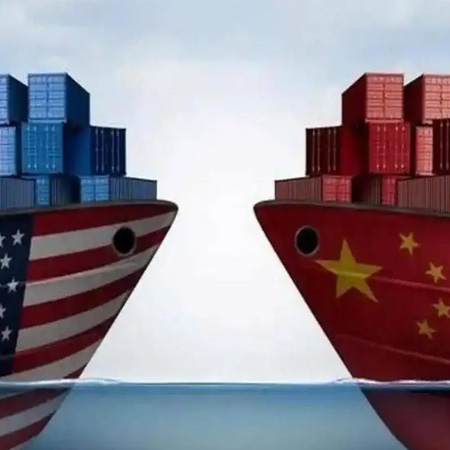On April 2, 2025, US President Trump announced a new round of tariff policies, including: 1. A 10% base tariff generally applicable to all economies; 2. A 25% tariff on cars exported to the United States; 3. Specific tariff rates for dozens of countries and regions with large US trade deficits. These include: Vietnam 46%, China 34%, the European Union 20%, Japan 24%, India 26%, South Korea 25%, Thailand 36%, etc. Subsequently, China announced on April 4 that it would implement countermeasures against the so-called “reciprocal tariffs” of the United States. Impact of US tariffs on China’s magnesium and silicon industries will gradually becoming apparent.
In fact, this is not the first time that the United States has raised tariffs on Chinese products. Since the trade war against China begins in 2018, tariffs became high on a number of Chinese products. It including magnesium (magnesium ingots, magnesium alloys, etc.) and silicon metal (industrial silicon), with a general tax rate of 25%. This policy has had a profound impact on China’s related industries, mainly reflected in exports, industrial structure and market competition.
Impact of tariffs on magnesium and silicon

China is the world’s largest producer of magnesium and silicon, and the United States was once an important export market. After the tariffs were imposed, China’s direct exports to the United States fell significantly. Taking Si metal as an example, China exported 100,000 tons to the US in 2017. After 2020, it fell to less than 10,000 tons.
Magnesium metal exports to the US were also hit similarly. In 2022, China’s exports of magnesium ingots to the United States were only about 5,000 tons. In fact, the demand in the US market has not decreased significantly. Ferro silicon is an obvious case. The EU’s 32.1% general tariff on Chinese ferrosilicon has prompted some exporters to adopt a “British springboard” strategy. That is exporting to the UK first and then transshipping to the EU market. In the US market, due to the long-term maintenance of high anti-dumping duties, China’s direct ferrosilicon exports have almost stagnated, prompting US buyers to turn to alternative sources of supply such as Brazil and Malaysia.
The Impact of US tariffs on China’s magnesium and silicon industries will be different. So does it for these related products, the tariff war will have different effects. According to export data, China’s ferrosilicon (>55%) exports totaled 411,100 tons in 2024. From the perspective of export geographical distribution, the main export markets are mainly in Asia. Japan, South Korea and Indonesia ranking in the top three, accounting for more than 60% in total. Meanwhile the number of exports to the US market only accounts for 0.73% of the total. In 2024, China’s magnesium ingot exports totaled 266,000 tons. The main export destinations were the Netherlands, India, South Korea, Canada, Japan and other places. The number of exports to the United States was relatively small, accounting for only about 0.41% of the total export volume.
In 2024, China exported a total of 720,000 tons of magnesium ingots, of which the largest markets were Europe, Canada, India, Japan and South Korea, and the United States accounted for only 0.05% of the total. Therefore, the so-called “reciprocal tariffs” from the United States this time will directly increase the cost of my country’s ferrosilicon, magnesium metal and silicon metal exports to the United States, but because the US market accounts for a very small share in my country’s ferrosilicon export structure, it is expected that the impact on the overall export scale of my country’s ferrosilicon will be relatively limited. However, after the United States strengthens the origin review, the risk of some exporters circumventing tariffs through re-export trade (such as through Vietnam and Malaysia) will increase.
In the long run, the US tariff policy will stimulate the expansion of production capacity in domestic and third-party countries. For example, the United States restarted metal silicon production capacity (such as the Mississippi plant), and the export share of metal silicon in Brazil, Norway and other countries increased. In the short term, although Chinese companies still have a dominant global market share, their price advantage has weakened, and their long-term competitiveness faces challenges. To this end, Chinese domestic companies are accelerating their transformation to high value-added products, such as magnesium alloy deep processing products, to reduce their dependence on the export of primary raw materials. Metal silicon companies are turning to downstream areas such as polysilicon and silicone to digest excess production capacity. In addition, some silicon metal exporters and magnesium ingot exporters will have to turn to the European, Japanese and Southeast Asian markets.
